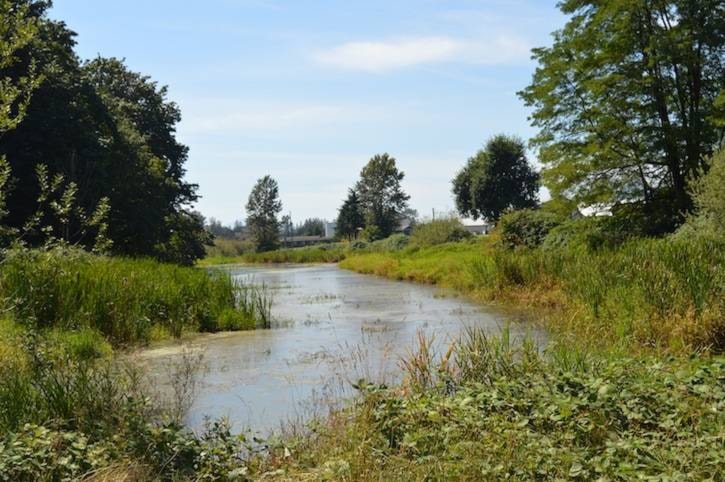A 2017 “action plan” for the Camp Slough cleanup effort was approved last week by city council.
Council has been exploring what it would take to have the degraded slough system restored, hiring Consultants McElhanney, and investigating costs in the short-term and longer term.
When it comes to restoring a degraded waterway, it’s all about the flow.
The costs of long-term restoration, with culvert replacement and more, is pegged at $35 million, over a span of up to 20 years.
“The price tag is very steep indeed,” said Mayor Sharon Gaetz, during the staff report at city hall last week. “It may be beyond what council can afford.”
Any movement in this direction will require funding partnerships with senior levels of government, she said.
There has been very strong community support for the idea of slough restoration in Chilliwack.
The issue of nutrient loading in the waterways by agricultural operations also came up, and the consensus was the need for developing an education campaign with signage to avoid nutrient loading in the waterways.
“I’m happy to see this move forward, even with baby steps,” said Coun. Chris Kloot, adding that with a recent changes at the provincial government, maybe some funding grants could be secured.
In the meantime, council approved a work plan of quick hits that is set to start this summer.
The 2017 work action plan items will cost about $240,000 and are funded in the budget. They are aimed at addressing “regulatory agency requirements” while also achieving some short-term hits.
McElhanney was awarded the contract for the 2016 Camp Slough Flow Study 2 project, for site investigative works, water quality testing and data analysis, community and stakeholder engagement, preliminary design solutions and a phased strategy and management plan. The problems include high temperatures, low flow, low rates of dissolved oxygen and more.
The data allowed McElhanney to create the hydraulic model of the Camp Slough and a baseline for the water quality levels in the Slough. McElhanney then developed a phased strategy and management plan to achieve the improvements to meet the community’s vision and desired outcome for the Camp Slough. Potential short, medium, and long term improvements with order of magnitude costing were established.
There are always regulatory challenges because they’re talking about waterways.
“The (Camp Slough restoration) project presents significant challenges relating to Federal and Provincial Statutes such as: the Fisheries Act, the Species at Risk Act, the Water Sustainability Act and Regulation, Farm Practices Protection Act and the Guidelines for Canadian Recreational Water Quality. As such. City staff has undertaken consultation and engagement with key stakeholders. First Nations and the community to establish open communication and work to address these hurdles.”
Work action plan for 2017 includes:
• Re-design CHIP Inlet with culverts and channel improvements
